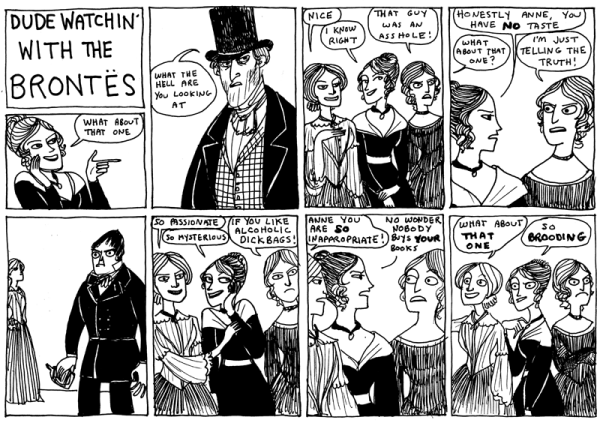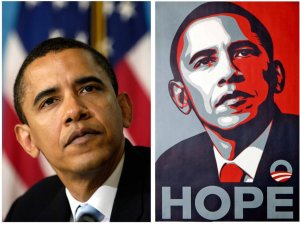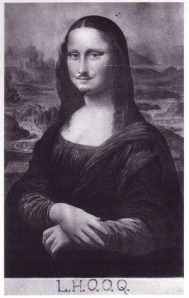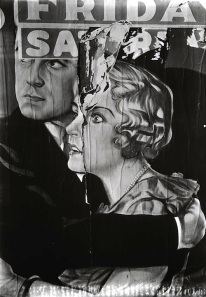“Every woman knows what I’m talking about. It’s the presumption that makes it hard, at times, for any woman in any field; that keeps women from speaking up and from being heard when they dare; that crushes young women into silence by indicating, the way harassment on the street does, that this is not their world.”- Rebecca Solnit
 "How It Works" xkcd
"How It Works" xkcd
For those of you unfamiliar with Rebecca Solnit’s 2008 essay,
“Men Explain Things To Me, ” I
highly recommend you give it a good, in-depth read. This is no angry
rant preaching to the mainstream feminist choir, I promise. She offers
up a straight-forward, honest critique of the widely accepted arrogance
of men in the academic world. Her experiences deeply resonated with
countless women, including myself, and quickly generated a wider
examination of gender-based preconceptions in academia and beyond. If
you have heard the term
“mansplaining” floating around the academic zeitgeist, or seen the popular and humorous blog
“Academic Men Explain Things To Me,” Solnit’s
article is what inspired their conception.
While stories of
“mansplaining” are easily digestible offer a platform for much needed
discussion, I am wary that we are focusing on a very narrow
characteristic of a much broader social norm. The issue at hand is not
as simple
disagreeing women, or not taking their intellect
seriously. The issue I am trying to define has more to due with the
filter in which society views women. A filter, that seems to become
stronger in fields still dominated by men.
I now realize how greatly these themes have shape my experience as a
female student, academic, and professional.* What I find unfortunate is
how long it took me to recognize this connection. I grew up being told
that gender bias in the professional world was nearly a thing of the
past. Even as I grew older, and tried to do my best to embody the ideals
of third-wave feminism, I, ironically, remained completely oblivious to
a characteristic of gender bias that was thrown in my face daily. This
was the consistent assumption that I was less informed, less
intelligent, or less experienced than a man who was speaking to me. Even
some of the most supportive male mentors in my life would first
experience several incidents of shock when I surpassed their low
expectations before they took my intelligence seriously. These
expectations came to be something I expected, and something I felt was
deserved. I didn’t realize that people were viewing other women in such a
light, I thought I was personally doing something to warrant such low
expectations.
To be absolutely clear, this is by no means some man-hating rant**
(another belittling gender stereotype thrown at feminist commentators.)
Women also belittle other women, men belittle other men, and women
belittle men. Of course they do! All the time! The difference is that
those instances do not typically relate to widely held preconceptions
based on gender. In fact, I would argue that often times the men that
patronize the intelligence of women are the most likely to be unaware of
their bias, perhaps even well-intentioned. In my experience, it is the
men who are most convinced that they lack any gender bias who are the
greatest offenders. Rarely has a man in my life explicitly told me I
couldn’t do something because I am a woman. But after enough people,
nearly always men, implied that I had little potential, I would limit
myself. I have stepped away from everything from building a campfire,
to applying to universities, only to watch far less qualified boys and
men confidently step into those roles.
What’s frustrating is how long it took me (and it appears, countless
other women) to realize how misplaced these assumptions are. Rather than
getting angry, I internalized others’ view of me and and, over time,
reshaped their false assumptions into crippling self doubt. The few
instances when males told me that I was less intelligent, less
qualified, or less able because I am a woman, I worked relentlessly to
prove them wrong. But those instances are not what I am focusing on. The
danger of the more subtle and un-checked cultural assumptions is that
women do not necessarily see where they are coming from and how
unjustified they are. I have never been told, or believed, that women
are worse at math than men. I knew for a fact that I had higher scores
on my math SAT than any boy in my high school Calculus class, and I knew
several other consistently high-achieving girls in a similar situation.
Not a single one of us auditioned for, nor were encouraged by our male
science teachers, to join our school’s academic team. But I didn’t avoid
my first public opportunities to be labeled an “intellectual” because I
am a woman. I avoided them because I did not see myself as deserving.
woman or not. Now those boys have gone on to become successful
engineers, businessmen, and Ph.d candidates. And they are absolutely
deserving of their hard-earned success! What I am confused about is
where they received their confidence to continue these pursuits, while
myself and other females with equal or greater potential were not
encouraged to develop equal self-confidence. Judging by the
lack of self-promotion among female professors and
the gender gap in academic citation this appears to be a consistent characteristic of even highly successful women at the top of their fields.
Although I am very passionate about them, I did not personally pursue
my chosen areas of study because they are where my strengths lie (they
really, really aren’t.) As a sensitive, “artsy,” young woman, I was told
the arts or humanities would be more accepting and were saddled with
less academic pressure (an unqualified judgement of more female
dominated fields). As a woman, advisers of mine admittedly evaluated my
career potential based more on my affinity for scarves and thrift store
clothing, than my individual skill sets and intellectual achievements,
something I don’t believe would have happened if I was a man. I trusted
that they knew something I didn’t and unquestionably internalized their
misguided perception.
To be clear, I am by absolutely no means implying that the humanities
are not as every bit as rigorous as the hard sciences or more
male-dominated fields. Far from it. But I was a dyslexic with severe
language-based learning disabilities. If evaluating my academic assets
and potential, any unbiased advisor would have pushed me into a math or
science field, NEVER one that requires incredibly lengthy reading and
writing and the mastery of multiple foreign languages to achieve high
success. Perhaps they never expected for me to reach such a level in the
first place? I love my areas of study, truly. But to be frank, I am
not suited for the typical path to success they require. I am
determined to make a name for myself doing what I am passionate about,
but that requires proving many people wrong, which is both exhausting
and discouraging. Unfortunately, my identity as a female seems to add
more greatly to academics’ preconceptions of me as I slowly progress
further into these fields, perhaps just as greatly as it would have been
in more male-orientated fields.
What has shocked me most as I have reach higher levels of academia,
as well as the fine arts and museum sectors, is how strongly positions
of power are dominated my males. The low levels of the hierarchal
pyramids in these fields are entirely dominated by women, but men are
consistently the ones who reach positions of power and high esteem.
Clearly, there is some sort of message being given to smart women that
they are less deserving. However subtle this message may be, it has a
far-reaching impact.
The message that I hope you all take out of my post is how necessary
it is to take the time to evaluate the preconceptions you may
unknowingly hold of others, or others may hold of you. A practice that I
feel is particularly valuable for both learners and educators, at any
age or stage in their career. The challenge for any learner should be to
justify others’ high expectations of them, never to prove others’ low
expectations wrong.
* This post deals exclusively with my own,very personal, experiences.
I do not speak for all females as a whole. I also recognize that many
of the issues I mention are similarly felt by people of color, low income
communities, non-cisgendered individuals, among other populations, however, I cannot speak on a personal level about such
experiences.
**I do feel that there is, in fact, a problematic bias towards talented males in our society as well. Young male students are often discouraged from pursuing careers in creative fields, in part, due to their low income potential. However, I do not feel that such biases have as far-reaching and negative impacts as these biases typically reverse in the higher ranks of the creative fields. I do feel pressure on boys to obtain careers with a salary capable of supporting a single-income household is an unfair expectation, the notion is out-of-touch with economic reality, and people of all genders. However, in the long run, this gender imbalance encourages men to excel, while women are continually assumed to have weaker aspirations and their professional personas are tinged with doubt about their aspirations and determination.
This post originally appeared on my wordpress hosted blog: musinginmuseums.wordpress.com
 *This post originally appeared on my wordpress hosted blog: musinginmuseums.wordpress.com
*This post originally appeared on my wordpress hosted blog: musinginmuseums.wordpress.com




